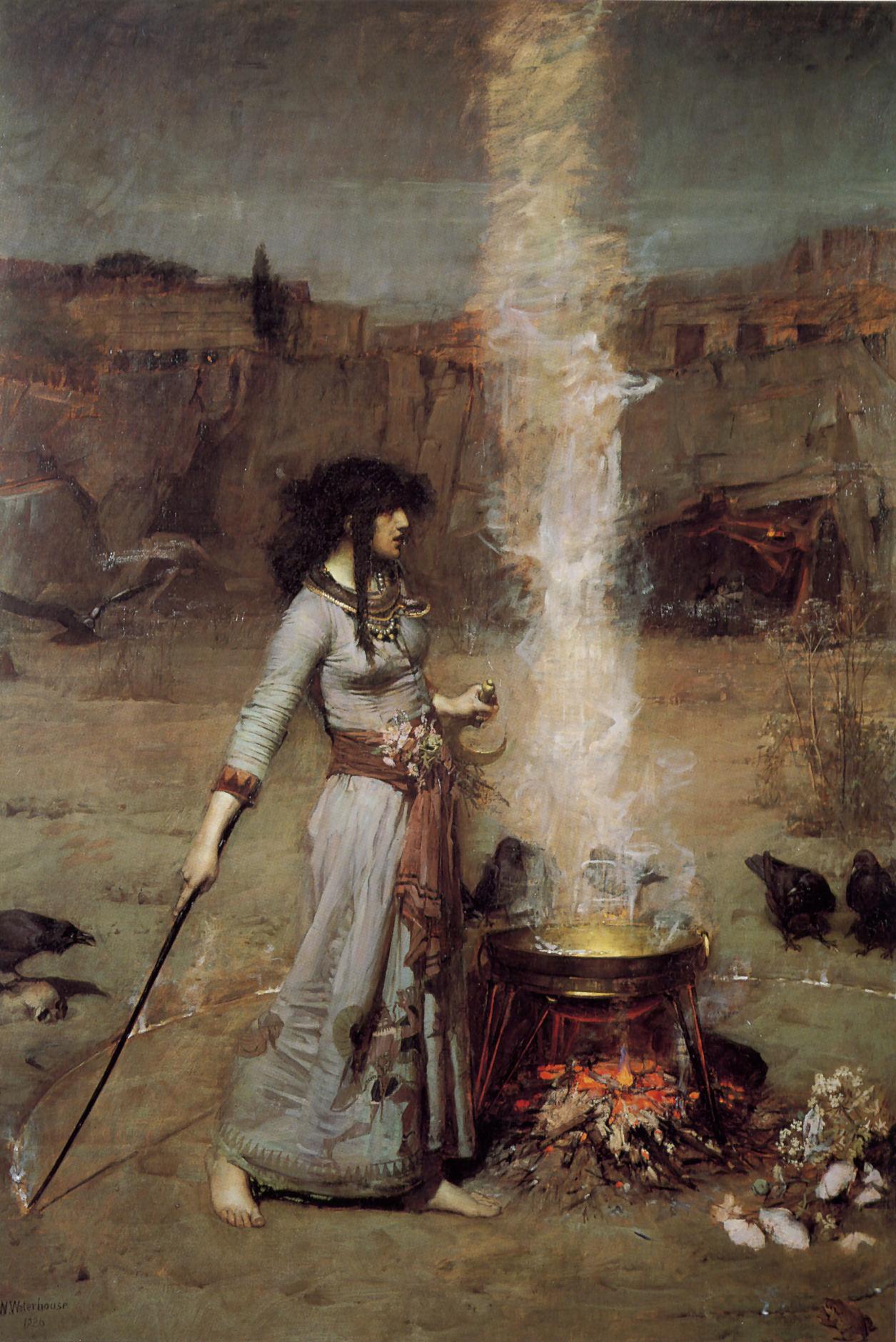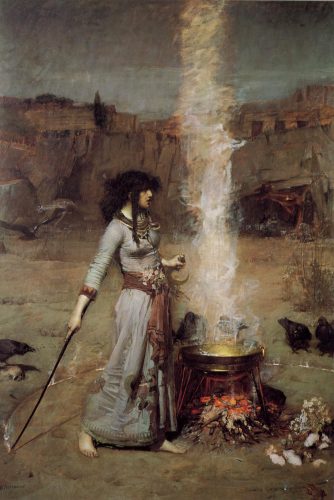I’m a big proponent of ritual. I love it and recommend it to students and clients. However, too often I come across discussions online where people talk about the “hocus-pocus of ceremony” or the “mindless running around” of a formalized practice. I don’t doubt that these commenters have witnessed or experienced inauthentic ritual. But what is ritual? How can we perform it truthfully? And why is it important?
My Webster’s Collegiate defines ritual as “the established form for a ceremony” and also “any formal and customarily repeated act or series of acts.” Definitions for “rite,” “liturgy,” and “ceremony,” all stress the actions taken. But is this the full experience of ritual? Certainly not. As I flip back and forth between dictionary and thesaurus, I finally find the word that most closely describes my understanding: sacrament, “a formal religious act that is sacred as a sign or symbol of a spiritual reality.”
All of the running around and hocus pocus of ritual is indeed empty and meaningless if we aren’t aware of or don’t acknowledge the spiritual reality that it reflects. To me, ritual is a series of focuses that repeatedly brings our attention back to the immanence of the Divine. The focuses that comprise ritual include the actions that show up in all the standard definitions but also incorporate many of the other senses as well.
To me, ritual includes four basic focuses. First is the physical focus, or the actual movements of the ritual, which are what we learn first. The physical focus of a ritual can include stillness, position, gesture or action. Next is the mental focus, such as no-thought or a focused contemplation. This can include or be achieved or guided by breathing techniques or ritual words. The third focus is that of the vision, such as gazing at an icon, image, or other intentional or coincidental metaphor for the corresponding spiritual reality. This can include conjuring to the mind visualizations or letting the mind receive unbidden imagery. The fourth focus is an energetic focus, such as emotional devotion to deity, a yearning for the Divine, or a blissful experience of spiritual communion. It can include focusing the attention on an energetic center of the body such as the Indian chakras, the Japanese haras, or the Western Hermetic qabalistically based energy centers.
Let’s look at an example to see how these focuses apply in real life. Rather than describing a full ritual, I’ll simply examine a few steps. Out of context it might lack ultimate cohesion but will nevertheless provide a simple example that you can explore further with the rituals you are already familiar with.
A common Reiki ritual is reiju, the spiritual blessing, shared between student and teacher at every class meeting. As we prepare to give reiju, we first draw the fourth symbol with our hand in the air and see it clearly (physical and visual focus). Then we say its mantra three times (mental focus). Then we feel the energy of that symbol wash over us (energetic focus). In this particular ritual, we do not change our energetic focus although we perform a variety of physical actions and follow prescribed mental focuses at various points in the ritual.
Another example is the Qabalistic Cross which is used before and after other rituals in the Western Mystery Tradition. In particular, rituals designed by the Golden Dawn are based on combining ritual focuses. We start by finding stillness (physical focus), then feel ourselves becoming larger until we connect with the Divine (energetic focus). We visualize the light of the Divine (visual focus) and feel it descend and enter our crown (energetic focus) as we also touch our forehead (physical) and say a particular phrase (mental). Then we continue with several more steps, each one utilizing all four focuses, with slightly different energetic states being experienced with each physical movement, mental metaphor, and visualization conjured.
If the actions or other focuses are disrupting a steady state of connection with the Divine, then it is possible that you are ready to let go of the ritual. However, most rituals work on many layers and if you feel you have gotten everything you can out of the ritual, it is probably a good opportunity to sink deeper into these focuses. Maintaining a series of focuses will help keep your mind from wandering (at worst) and keep you present and engaged with your practice (at best).
Remember that although it is beautiful to become lost in the Divine, ultimately our purpose is to bring the Divine, with consciousness and intention, to the earthly plane–that means experiencing the bliss of the Divine while being fully present in and aware of our bodies and ourselves. The repetition of the ritual–even the most basic of action-heavy ceremonies– brings us back into our body, where it is in some ways harder to maintain the connection to the Divine, but where we create the invitation requesting the presence of the Divine to fill us and work through us.
_________________________________________________
Joy Vernon is a Certified Professional Tarot Reader and Reiki Teacher in Denver, Colorado. Her specialty is the Empyrean Key Transformational Guidance, which combines energetic and esoteric modalities to help her clients break through blocks and align themselves with their higher purpose. For information on upcoming classes or to schedule an appointment, please visit JoyVernon.com.
© 2012 by Joy Vernon. All rights reserved.









Beautifully written, and I also find that creating a ritual or ceremony around certain actions help me to be more fully aware and present in my intent.
Thanks Becky! Yes, the ritual focuses are also a great support for intent!